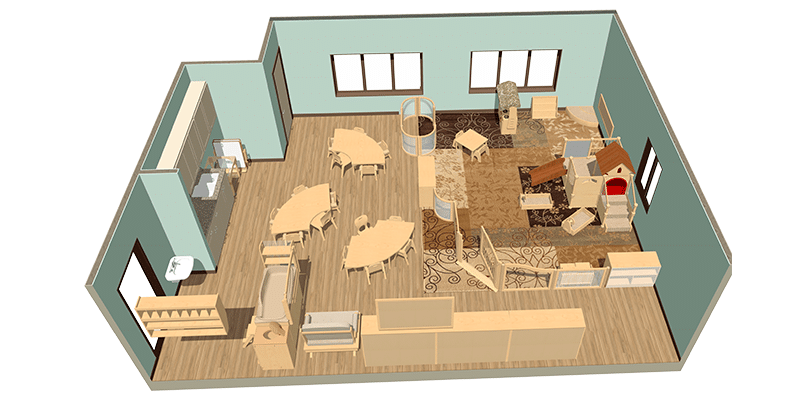Creating the perfect classroom layout is essential for an optimal learning environment. Consider factors such as furniture placement, natural lighting, and traffic flow to maximize space and promote student engagement.
Designing the perfect classroom layout is crucial for creating a space that is conducive to learning and development. From choosing the right furniture to arranging it in the most effective way, there are many factors to consider. In this blog post, we’ll provide tips and insights on how to design and arrange your classroom for optimal learning and growth.

首先,考虑学生的年龄和需求。年幼的孩子受益于开放空间和轻松获取材料,而年长的学生则需要更多的办公桌空间来专注于工作。在课堂设计中平衡不同年龄组的需求非常重要。
- Plan Classroom Layout
- Choose Furniture
- Arrange Classroom Furniture
- Incorporate Natural Light
- Decorate Classroom
Plan Your Layout
Before selecting furniture, it is important to plan your classroom layout. Consider the size of the classroom, the number of students, and the activities that will take place in the space. Sketch out different layouts to find the best arrangement for your classroom.
- 确定你的空间:首先测量你的教室并勾画出一个基本的平面图。考虑班级的学生人数,以及您需要容纳的任何额外家具或设备。
- Create zones: Divide your classroom into different zones based on the activities that will take place there. For example, you may want to create a reading area, a block area, and a quiet area for independent work.
- Consider traffic flow: Make sure there is enough space for students to move around the classroom safely and easily. Arrange furniture so that there are clear pathways and avoid creating bottlenecks or dead ends.
- Use natural light: Whenever possible, position desks and tables to take advantage of natural light sources such as windows or skylights. Natural light can improve mood, reduce eyestrain, and create a more inviting space.
- Choose appropriate furniture: Select furniture that is appropriately sized for the age and size of your students, and that is durable and easy to clean. Consider flexible seating options such as bean bag chairs or standing desks to allow for a variety of learning positions.
- 个性化空间:通过结合反映学生兴趣和身份的学生艺术作品、海报和其他装饰,让教室感觉像是一个温馨和个性化的空间。
Choose the Right Furniture
Selecting the right furniture for your classroom is crucial. Montessori-style furniture is popular for early childhood classrooms, featuring child-sized tables and chairs, as well as storage units for books and materials. Be sure to choose furniture that is safe, durable, and comfortable for children.
- Comfort and safety for children: Ensure that the furniture is comfortable, appropriately sized, and does not pose any safety hazards.
- Durability: Choose furniture that is sturdy and durable, as it will be used frequently and by many different children.
- Functionality: Select furniture that serves a specific function in the classroom, such as storage, seating, or work surfaces.
- Flexibility: Look for furniture that can be easily rearranged to accommodate different learning activities and classroom layouts.
- Sustainability: Consider the environmental impact of the furniture and look for options that are made from sustainable materials and can be easily recycled or repurposed.
- 预算:选择家具时请牢记您的预算,但也要考虑投资购买优质耐用家具的长期收益和成本效益。
Arrange Your Furniture
Once you have selected your furniture, arrange it in a way that maximizes space and functionality. Create different areas within your classroom, such as a reading nook or a designated space for group activities. Ensure that there is enough space for students to move around comfortably.
- Start with the basic layout: Determine the best location for the teacher’s desk, whiteboard, and storage areas.
- Consider the flow of traffic: Arrange furniture in a way that allows for easy movement and access to different areas of the room.
- Choose appropriately sized furniture: Ensure that furniture is proportionate to the size of the room and the age of the children.
- Optimize learning environments: Place furniture in a way that maximizes natural light, reduces noise levels, and minimizes distractions.
- Incorporate flexibility: Use furniture that can be easily moved and rearranged to accommodate different learning activities.
- Safety first: Ensure that furniture is securely anchored to the floor or wall to prevent accidents and injuries.
Incorporate Natural Light
Natural light is essential for creating a positive learning environment. When designing your classroom, ensure that there are enough windows to let in natural light. If this is not possible, incorporate bright lighting to simulate natural light.
Decorate Your Classroom
Decorating your classroom is an important part of creating a positive learning environment. Incorporate bright colors, educational posters, and student artwork to create a space that is both fun and engaging.
- Use bright and welcoming colors: Colors can have a big impact on a child’s mood and behavior, so it’s important to choose colors that are bright, cheerful, and welcoming.
- Add plants and natural elements: Incorporating natural elements like plants, flowers, and natural light can help create a more calming and soothing environment for children.
- Display student work: Displaying student work can help create a sense of pride and ownership in the classroom, while also providing a visual representation of the learning that takes place.
- Use educational posters and charts: Educational posters and charts can help reinforce key concepts and information, while also adding visual interest to the classroom.
In conclusion, designing the perfect classroom layout involves careful planning and selection of appropriate furniture. A well-designed classroom layout can enhance the learning experience for students and promote a positive and productive learning environment.





